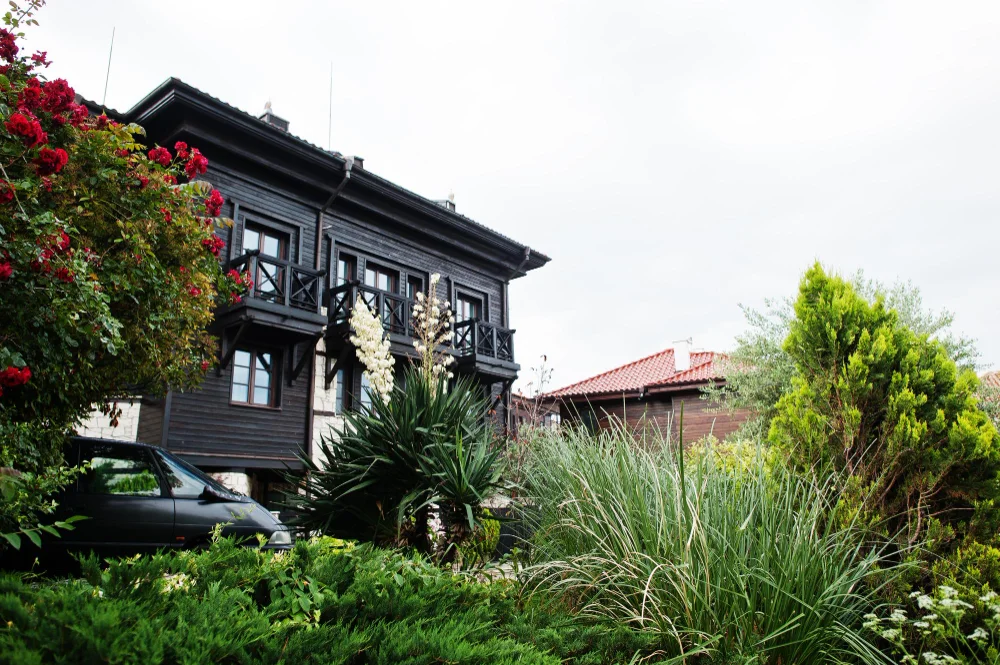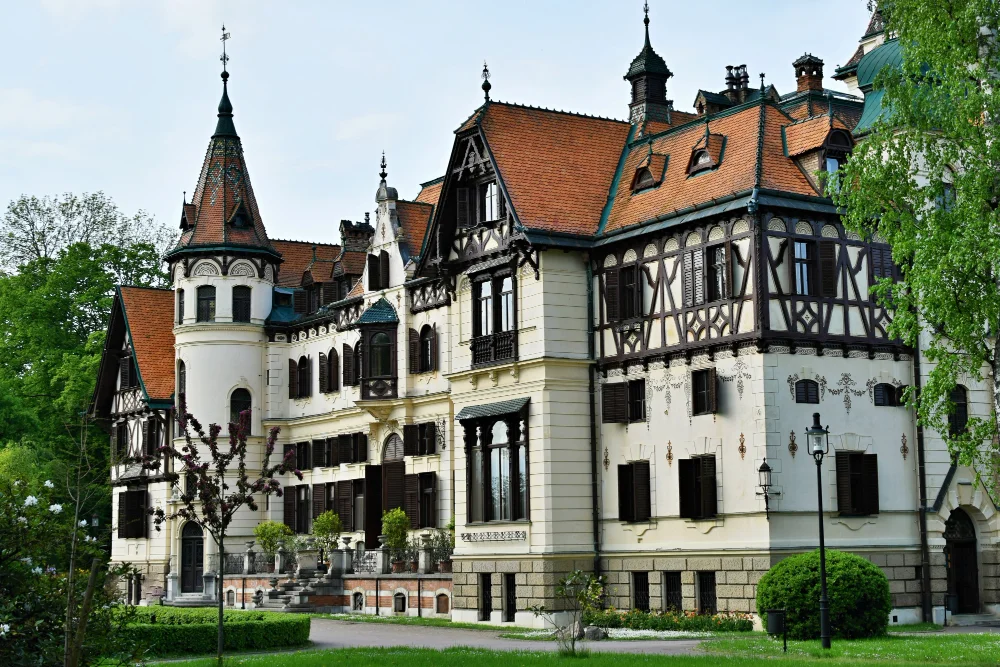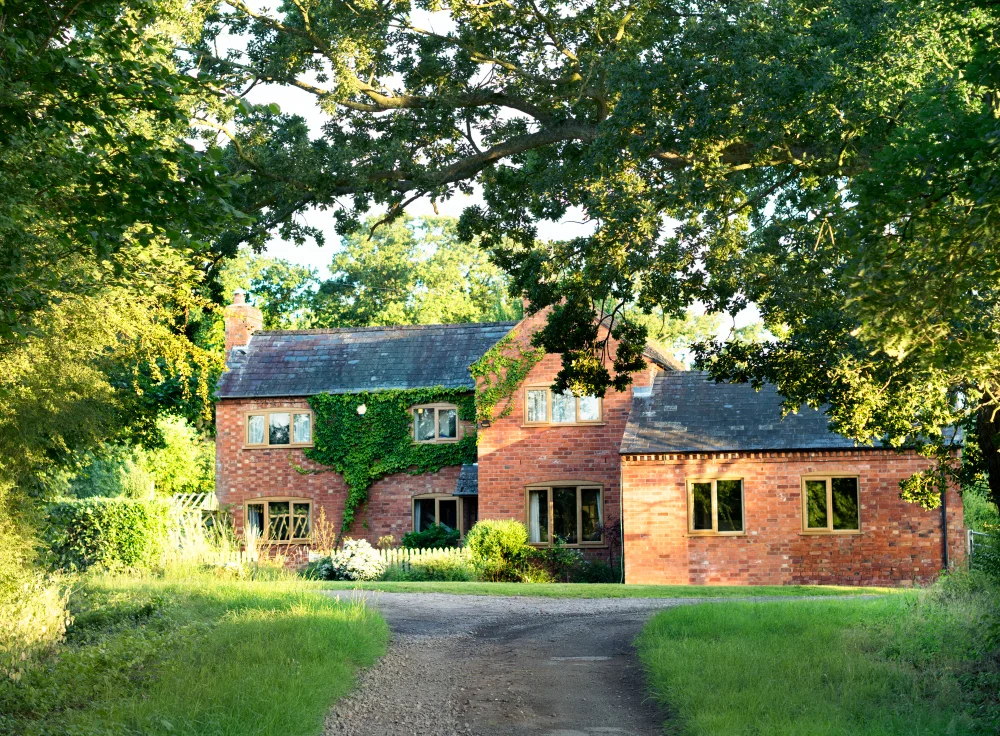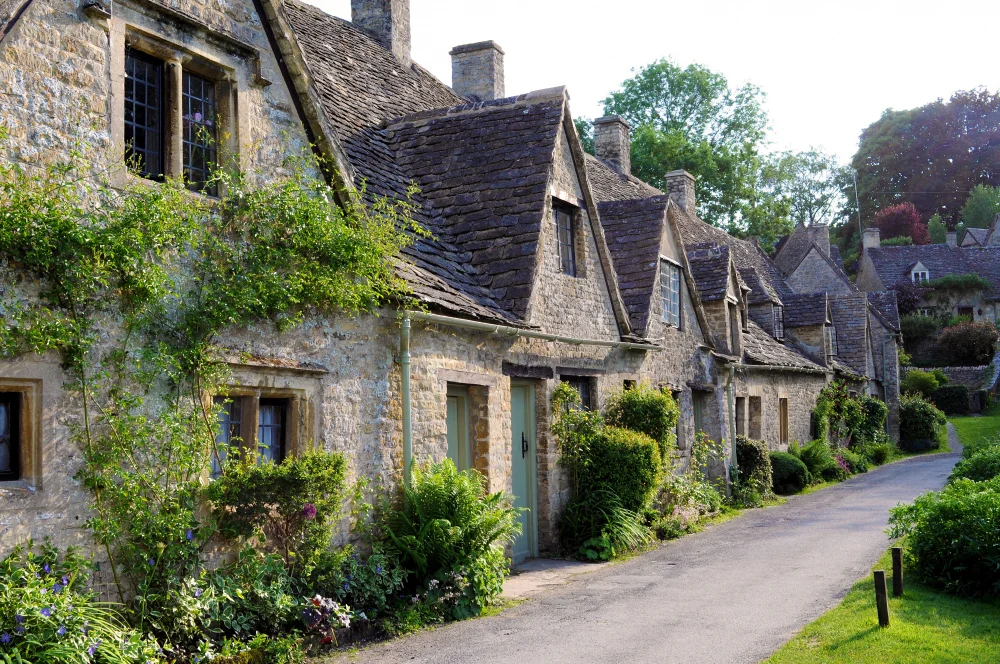Modern Tudor homes combine the elegance of classic Tudor architecture with contemporary design sensibilities. These homes are known for their steeply pitched gable roofs, decorative half-timbering, tall, narrow windows, and leaded glass features.
While they honour the historical elements of Tudor design, modern interpretations incorporate open floor plans, energy-efficient materials, and contemporary finishes. The result is a home that feels both timeless and functional, appealing to homeowners who want style and practicality.
The allure of modern Tudor homes lies in their ability to merge traditional aesthetics with contemporary living. They retain the storybook charm of early Tudor homes while providing bright, spacious interiors and state-of-the-art amenities that meet today’s lifestyle requirements.
The History and Evolution of Tudor Architecture
Tudor architecture originated in England during the late 15th and 16th centuries. It was characterized by steep roofs, timber framing, masonry, and intricate details that reflected craftsmanship and prestige. Over time, the style evolved, incorporating more decorative elements and adapting to local climates and materials.
In the early 20th century, Tudor Revival homes gained popularity in the United States, particularly in suburban neighbourhoods.
Modern Tudor homes retain the essential characteristics of the style but evolve them for contemporary use. Large windows, open interiors, and sustainable materials have become standard in modern adaptations, blending the charm of the past with current building innovations.
This evolution demonstrates how Tudor design can remain relevant while accommodating the needs of modern homeowners.
Key Exterior Features of Modern Tudor Homes

Modern Tudor homes are visually striking, blending traditional and contemporary features. Their exteriors often showcase steeply pitched roofs, half-timbering, and brick or stucco facades. These elements create a sense of permanence and elegance while also offering practical benefits such as efficient water drainage.
Steeply Pitched Roofs
These roofs are not only a design signature but also practical, effectively channelling rain and snow.
Half-Timbering
Exposed wooden beams combined with brick or stucco infill create texture and visual interest.
Tall, Narrow Windows
Typically arranged in sets, they provide natural light while maintaining privacy.
Arched Doorways
Rounded arches add medieval charm and are often accented with stone or brick details.
Gabled Roof Lines
Multiple gables add dimension and character to the home’s silhouette.
Interior Design and Modern Comforts

Modern Tudor homes balance historic charm with contemporary interior design. Interiors often feature open floor plans, high ceilings, and natural materials that create a welcoming atmosphere.
Exposed beams, stone fireplaces, and wood paneling provide warmth and character, blending seamlessly with modern appliances and lighting.
Key Interior Features
- Exposed Beams: Provide visual interest and a sense of historical authenticity.
- Stone or Brick Fireplaces: Serve as central features, combining aesthetics with functionality.
- Leaded Glass Windows: Bring traditional elegance while enhancing natural light.
- Open-Concept Layouts: Encourage family interaction and flexibility in interior spaces.
- Neutral Color Palettes: Light and neutral tones create airy, spacious interiors while highlighting architectural details.
Modern Tudor Homes: Contemporary Design Adaptations
Architects today reinterpret Tudor homes for modern living. Contemporary elements include energy-efficient materials, expanded window designs, and sustainable construction practices. These changes ensure that modern Tudor homes are environmentally conscious, functional, and aesthetically appealing.
For example, large glass doors can open up living spaces to gardens or patios, creating a strong indoor-outdoor connection.
Sustainable materials such as reclaimed wood or low-VOC paints are often incorporated to reduce environmental impact. These modern adaptations preserve Tudor charm while enhancing comfort and usability.
Benefits of Choosing a Modern Tudor Home

Owning a modern Tudor home offers numerous advantages that appeal to homeowners seeking both style and functionality. These homes provide a timeless aesthetic, blending the classic charm of Tudor architecture with contemporary design elements.
Open floor plans and modern amenities ensure practical, comfortable living, while energy-efficient materials and insulation reduce utility costs. Additionally, the unique architectural style and high-quality construction can enhance the property’s market value, making it a wise investment for the future.
Modern Tudor homes also allow for customization, enabling homeowners to integrate luxury finishes, smart home features, and personal touches without compromising the home’s character.
Key Advantages
- Timeless Aesthetic: Combines historical charm with modern elegance.
- Functional Layouts: Open floor plans and contemporary amenities enhance daily living.
- Energy Efficiency: Incorporates sustainable materials and upgraded insulation for reduced energy bills.
- High Resale Value: Unique design and quality construction increase property appeal.
- Customizable Features: Homeowners can add innovative technology, home offices, or luxury finishes while preserving style.
Considerations for Building or Renovating
When planning to build or renovate a modern Tudor home, homeowners must carefully consider several key factors to achieve a harmonious blend of traditional charm and modern functionality.
Maintaining architectural consistency is essential to preserve iconic Tudor features such as steeply pitched roofs, half-timbering, and arched windows while incorporating contemporary updates like open floor plans and energy-efficient materials.
Material selection plays a critical role, as high-quality and durable materials ensure both longevity and aesthetic appeal. Budgeting is another important aspect, as custom finishes, modern amenities, and sustainable construction methods can increase overall costs.
Additionally, understanding local building codes and zoning regulations is vital, as these may influence design choices and structural modifications. Thoughtful planning in these areas ensures that the final home is both visually appealing and practical for modern living.
Common Styles and Variations
Modern Tudor homes come in a variety of styles, each offering a unique interpretation of the classic Tudor aesthetic. While all styles maintain signature elements such as steep roofs, half-timbering, and arched windows, the approach to interior layouts, exterior finishes, and decorative details can vary significantly.
Homeowners can choose a style that reflects their taste, whether they prefer a more traditional look, a whimsical storybook feel, or a contemporary twist on the classic design.
Understanding the differences between these variations helps in making informed decisions when building or renovating a Tudor-inspired home.
Popular Modern Tudor Styles
- Tudor Revival: Focuses on historical authenticity with gables, brickwork, and half-timbering.
- Storybook Tudor: Emphasizes charming, whimsical details, steeply pitched roofs, and playful architectural features.
- Neo-Tudor: Blends traditional Tudor elements with contemporary lines, larger windows, and open-concept interiors.
- Cottage Tudor: Offers a cozy, smaller-scale design with charming accents and natural materials.
- Urban Tudor: Adapted for city settings, integrating modern amenities while retaining Tudor-inspired exterior details.
Conclusion: The Lasting Appeal of Modern Tudor Homes
Modern Tudor homes successfully merge the timeless elegance of traditional Tudor architecture with contemporary living standards.
From their iconic steep roofs and half-timbered exteriors to open floor plans and sustainable materials, these homes offer both aesthetic beauty and practical functionality.
Whether building from scratch or renovating an older property, modern Tudor homes provide a versatile, stylish, and comfortable living experience. Their enduring appeal ensures that these homes remain coveted for generations.







![B2B Marketing Strategy That Works in 2025 [Real Examples]](https://updatednetworth.com/wp-content/uploads/2025/06/b2b-marketing-strategy-that-works-in-2025-real-examples-150x150.webp)


